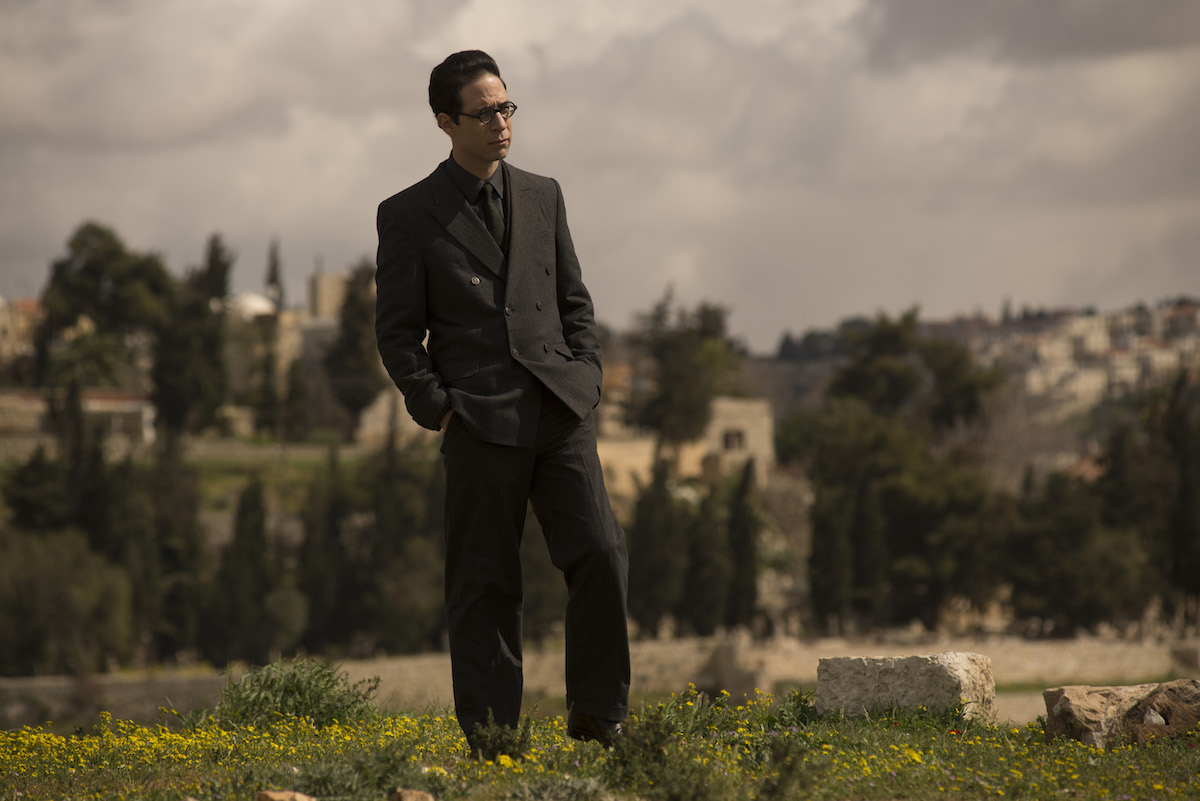
A Tale of Love and Darkness, Natalie Portman’s directorial debut film, is based on a true and very personal story: the Amos Oz memoir of the same name. But it’s also set within a larger true story, the tale of life in the area that was not yet Israel.
When the film picks up in the mid-1940s, though World War II and the Holocaust were only just drawing to a close and thus drawing attention to the plight of the world’s Jewish population, the story had already been developing for decades. Since 1923, Palestine had fallen under the British mandate, in a system that gave the British the responsibility for creating a Jewish homeland in the region. Oz’s parents were among those Jews who came to Palestine between World Wars I and II, as a mass of Jewish immigration “flowed out on to the desert,” as TIME would later put it.
Get your history fix in one place: sign up for the weekly TIME History newsletter
But the question of who controlled the land, and especially of the holy city of of Jerusalem, was immediately a bloody one. The film picks up in 1945, and the “electric tension” that “gripped” Jerusalem at that time was the subject of a lengthy TIME cover story almost exactly 70 years ago, on Aug. 26, 1946:
One of Asia’s suffering cities, by virtue of its peculiar sanctity, destiny and tragedy, was a focus of world drama last week. Jerusalem, the thrice holy, a Christian, Jewish and Moslem shrine, dominated the bitter struggle over Palestine. The struggle involved the British Empire, world Judaism, Pan-Islam, Russia and inevitably, as a result of its new world eminence, the U.S…
Why had Palestine, a narrow, 10,000-square-mile strip of desert land, become a concern to all men? In part the answer, as old as history, was the yearning of Israel for its promised land: By the rivers of Babylon, there we sat down, yea, we wept when we remembered Zion. . . If I forget thee, 0 Jerusalem, let my right hand forget her cunning. In part it was as old as man’s desire to be free, now manifested in Arab determination to win independence. In part it was as old (and as new) as the facts of 20th Century power politics.
For nearly two thousand years, since the Romans first drove them into exile, Jews, wherever they were, dreamed wistfully of a return to Palestine, waited for the Messiah who was to lead them back. But by one of history’s ironies it was not the religious fervor of Judaism that finally brought them back from the Diaspora. It was a new feeling of nationhood among a people united partly by religion (though among them were atheists), partly by race (though many bore no blood relation to the biblical tribesmen who were their “ancestors”), partly by tradition (though they included extreme political and social experimenters), but chiefly by fellow-suffering. Despite differences among them, they were all Jews to a world whose affection was inconstant and whose hatred through the ages had been sudden and cruel.
…Then came World War I. Britain, with her back to the wall, acted to safeguard the Middle East, its highway of Empire, and to strike at Germany through Turkey. It promised Arab leaders independence from the Turks and self-government through most (the Arabs now say all) of the Middle East. At the same time Britain sought to rouse world Jewry (including German Jews) to support the Allied cause and weaken Germany. In his famous Declaration, Foreign Secretary Arthur (later Lord) Balfour informed Lord Rothschild, the prominent British Zionist, that “His Majesty’s Government view with favor the establishment in Palestine of a National Home for the Jewish people, and will use their best endeavors to facilitate the achievement of this object.” Britain’s League of Nations mandate over Palestine incorporated this pledge. From the double root of those conflicting promises to Arabs and Jews has grown the present conflict.
Many years later, writing for TIME in 1993, Amos Oz would describe the way in which that conflict had remained ever-present in the decades that followed: “The case between Israelis and Palestinians is a tragedy precisely because it is a clash between one very powerful claim and another,” he wrote. “Israelis are in the land of Israel because there is not and cannot be a national homeland for the Jews anywhere else. The Palestinians are in Palestine because their ancestors have been here for more than a thousand years. Where one powerful claim clashes with another, there can be either an endless cycle of bloodshed or a somewhat inconsistent compromise.”
More Must-Reads From TIME
- The 100 Most Influential People of 2024
- The Revolution of Yulia Navalnaya
- 6 Compliments That Land Every Time
- What's the Deal With the Bitcoin Halving?
- If You're Dating Right Now , You're Brave: Column
- The AI That Could Heal a Divided Internet
- Fallout Is a Brilliant Model for the Future of Video Game Adaptations
- Want Weekly Recs on What to Watch, Read, and More? Sign Up for Worth Your Time
Write to Lily Rothman at lily.rothman@time.com